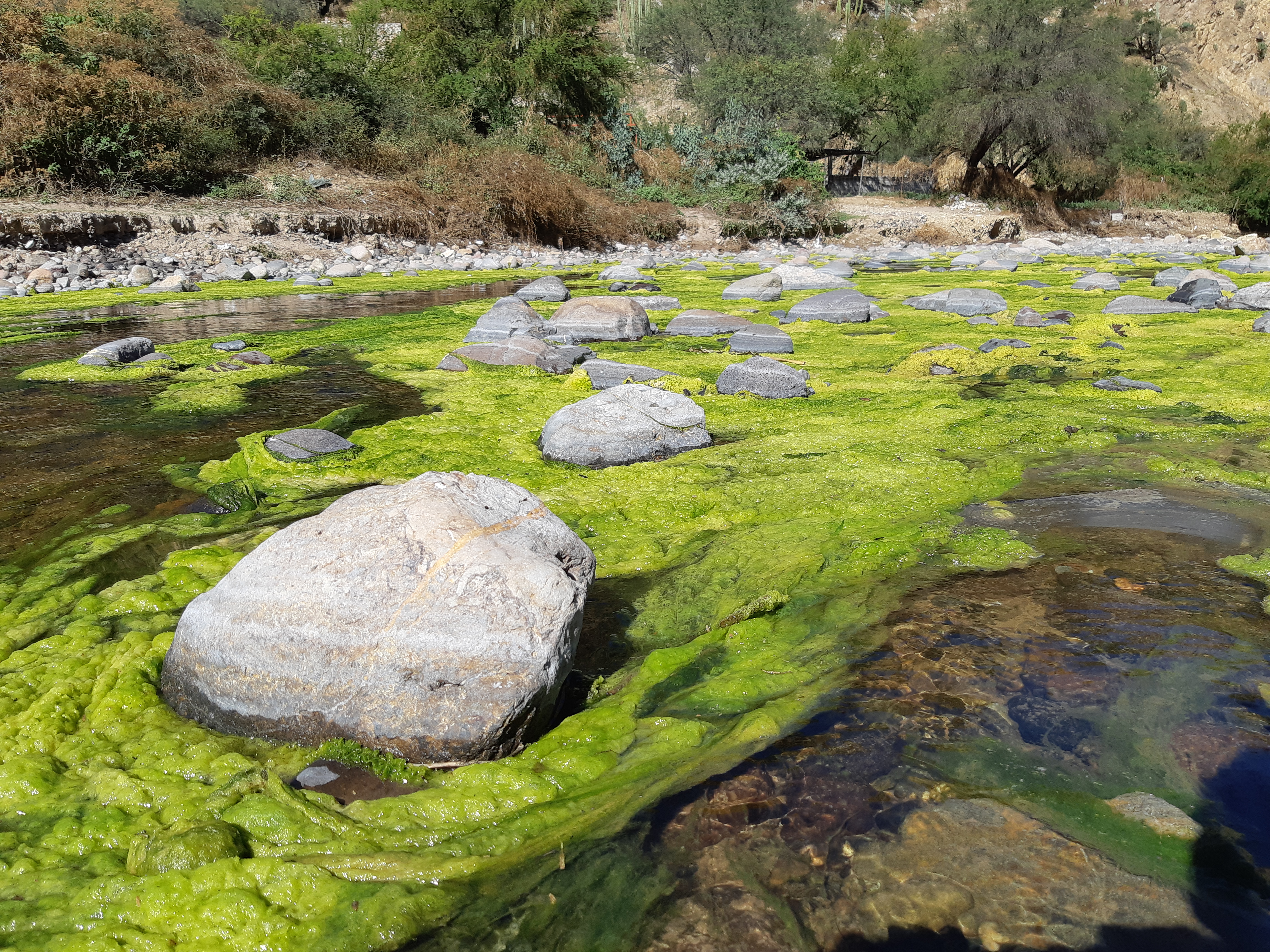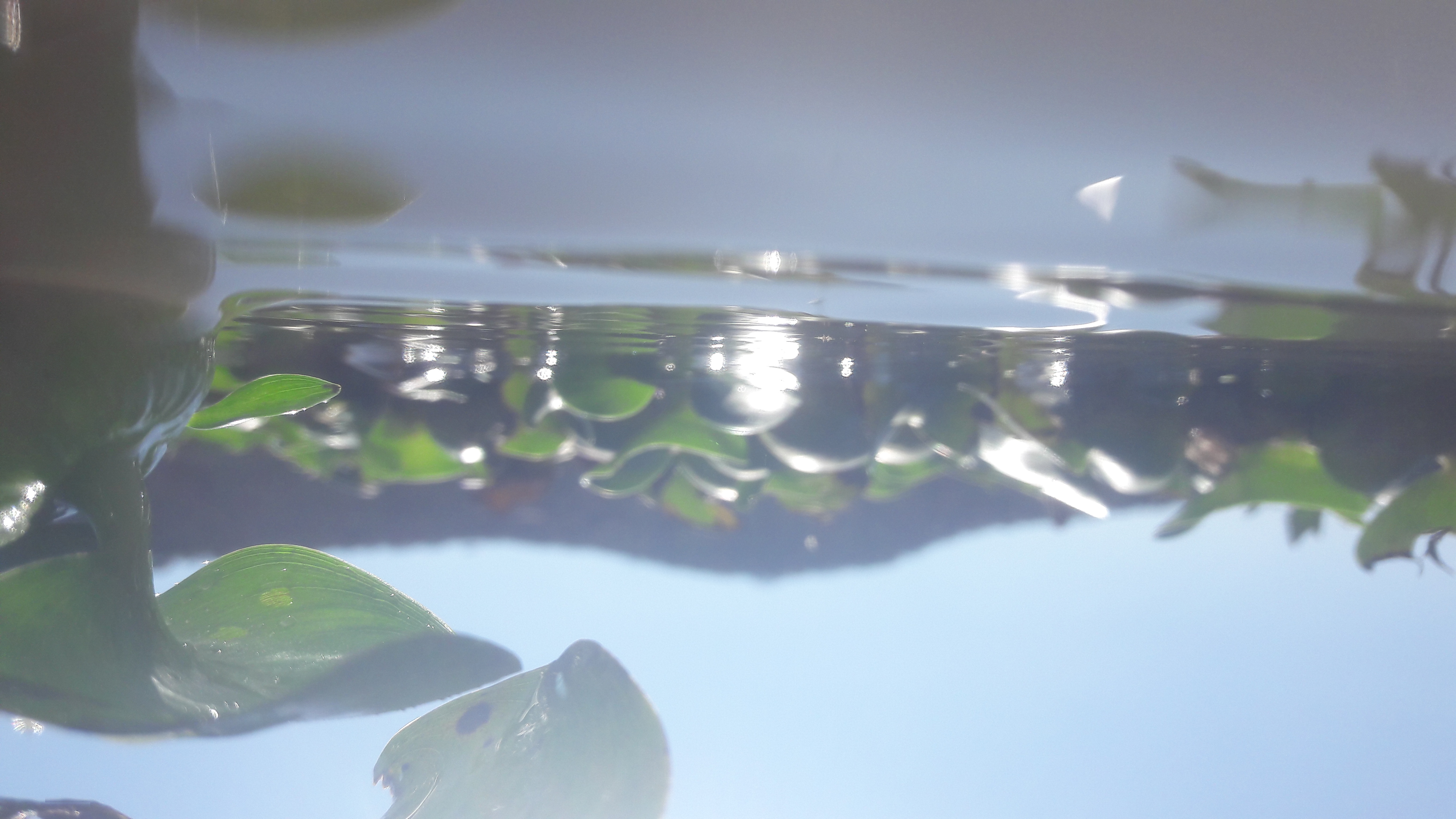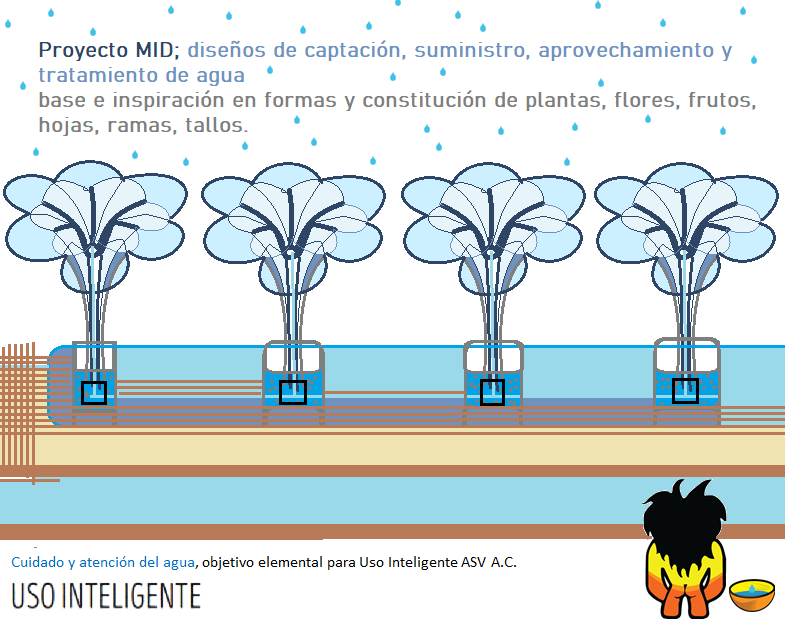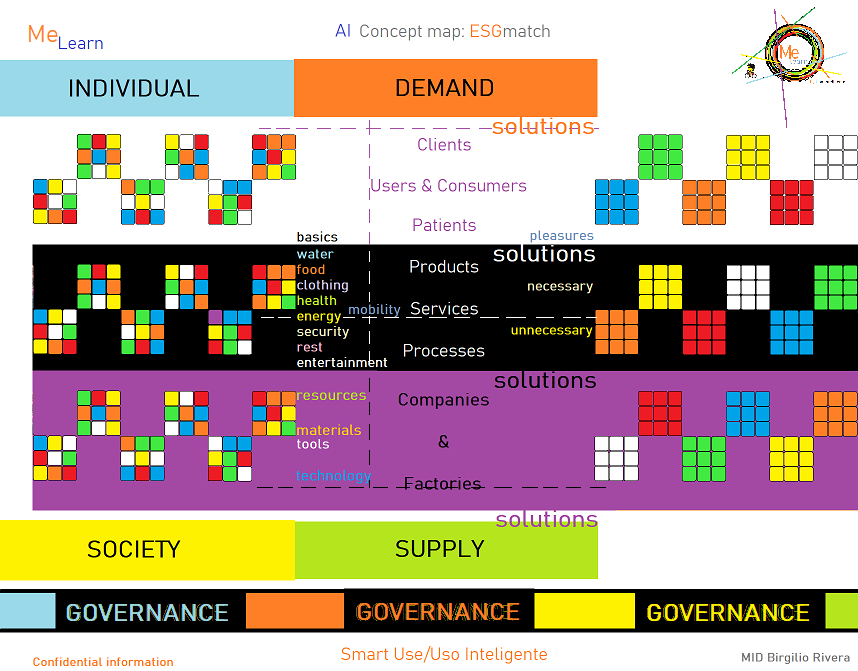Water Wise Use
Uso Inteligente/Mexico
(
Civil society organization
)
#SDGAction48728
Description
Uso Inteligente/Smart Use is an educational project based in a story of a caveman that we called Uso/Use, who represents the origins of human specie and the caveman that we all have inside.
Uso Inteligente/Smart Use educational content (literary, drawings, audiovisuals, materials, technology and tools are created by social participation considering simple advises for sustainable actions and projects considering 7 elemental objetives:
1) Human education and employment
2) Human population control, quantity and consume impacts
3) Water care and attention, based in Knowledge for water wise use concept
4) Nutrition, with concept of education+food&water+exercise=nutrition
5) Pollutant reduction
6) Species protection
7) Ecosystems care
Water as an elemental resource, Education and human employment as a central axis of our impact on planetary productivity are key for our group or collaborators, experts, our actions and projects.
Main reasons for our water parnership and compact Water Wise Use.
Social participation required
Support house holders research and analysis of water uses and consumes, support education and information to implement strategic action plans. Methodology including differenciated diagnostic analysis per house, family, also schools and instalations. Continue a research and analysis of water bodies in different localties of Mexico (Rivers, Lakes, Dams, LME), development of biotechnology for water treatment, water harvesting technology, water supply, leverage and treatment technology, also water informatic technologies, apps and Artificial Intelligence platform for a water and resourses wise use.
Create awareness towards water uses, consumes and pollution impacts, supporting people to implement basic and effective strategic actions plans. development of Bio enzymes for water treatment.
Informatic platform for householders contact and support from Smart Use group of experts.
Each householder is responsable to introduce and follow up their own project for a personal water use and impact analysis to design an implement a water wise strategic action plan with support of our group of experts.
Ing. José Enrique Garza, bio enzyme developer, for soapy water, home drainage.
Differentiated analysis process for each house, instalation or water body solution design
Profesor Pedro Da Costa, SANA org. Design, development, evaluation, implementation and monitoring of technologies for water collection, condensation, supply, use and treatment. development of rotating cylinders for water treatment. sanamexico@gmail.com
Treatment of water bodies (rivers, streams, dams, lakes, oceans). supported mainly with Academia, students, teachers, experts and Civil Society.
Artificial Intelligence platform designing and testing.
Supporting over 300 houses per year with costs covered by each house.
Capacity to increase significantly our attention and support to vulnerable householders and community.
Requierements to manage contributions and a budget for operating expenses and needs.
Constant supervision and evaluation of improvements and measurement with householders project liders.
Mexico, CONAGUA
NATIONAL WATER COMISSION, STATES WATER COMISSION.
National governments at the Caribbean and Latin American Countries.
House holders reports and action plans, indicators and date
Liters of water used by person and home, forms of use, sustances convined with water, pollution detection, action plans, improvements, measurement of water use reduction and pollution reduction.
Water bodies rehabilitation attention with independent evaluation and reports. Water analysis, NOM-001, sour analysis, biosphere analisys, productivity analisis, socieconomy analysis, pollution analysis, capture analysis and governance analisys per location.
Civil Society and Academia. Universidad Autónoma de Querétaro..
Ing. José Enrique Garza, bio enzyme developer, for soapy water, home drainage, even for treatment of water bodies (rivers, streams, dams, lakes, oceans).
Profesor Pedro Da Costa, SANA org. Design, development, evaluation, implementation and monitoring of technologies for water collection, condensation, supply, use and treatment. development of rotating cylinders for water treatment. sanamexico@gmail.com
Tecnology developers, Marak souluciones integrales de agua, Inpipe energy.
Fundación Ecología con Amor A.C. related projects: Ecological education projects, Ecosystems Rehab, clean ups and reforestation; water bodies and natural spaces, State of Mexico and other territories. ecologia.c.amor@gmail.com, lvargas@ecologiaconamor.org
Students, Teachers and Schools (groups of social services, volunteer groups)
IV.AI Artificial intelligence, machine learning, bot, natural language processing agency - IV.AI coworking with Smart Use/Uso Inteligente in Artificial Intelligence platform for Uses and consumtions, MeLearn project.
Water bodies list, situation of each localty, action plans report and measurements.
¿Do you know how many liters of water you use in a day? Information and support tool for people to improve their use and consumption of water, accompanying people to calculate their use and consumption of water to create a general savings plan through information and tools that allow us to implement improvements in our actions and practices. General considerations: target: young people and adults mainly with knowledge and in charge of collecting, supplying, using, consuming and treating household water and activities outside their home. The uses and consumption of water for each person are variable considering whether they live in the city or in the country. Access to drinking water and food consumption, personal hygiene - watering can - sink and kitchen - toilets - washing clothes and utensils - Others BIOENZIM information by Ing. José Enrique Garza. BIO enzime is a complex of natural elements: Enzymes; Lipoprotein substances and energized plant extracts with complementary activity, which accelerates the process of oxidation and deodorization of wastewater in treatment plants in a natural and non-toxic way, balancing and optimizing BOD5 and COD, in the residual biomass responsible for its purification, optimizing the balance between the aerobic and anaerobic bacterial flora, thus reducing the plant operating costs with energy savings of up to 50%, eliminates organic scale from mechanical parts and reduces about 40/50% of the volume of sludge, for optimal use in agriculture. ACHIEVEMENTS: With the dosage of BIOENZIM in the Sanitary Wastewater Sanitation Treatment System, in Aerobic and Anaerobic conditions, a METHANOGENIC DIGESTION is maintained, avoiding bad odors (acidogenic digestion) and obtaining treated water with reuse quality in the effluent of the system. https://sdgs.un.org/partnerships/chak-luum-ocean-life-and-planetary-productivity
SDGS & Targets
Goal 4
Ensure inclusive and equitable quality education and promote lifelong learning opportunities for all
4.1
By 2030, ensure that all girls and boys complete free, equitable and quality primary and secondary education leading to relevant and effective learning outcomes
4.1.1
Proportion of children and young people (a) in grades 2/3; (b) at the end of primary; and (c) at the end of lower secondary achieving at least a minimum proficiency level in (i) reading and (ii) mathematics, by sex
4.1.2
Completion rate (primary education, lower secondary education, upper secondary education)
4.2
By 2030, ensure that all girls and boys have access to quality early childhood development, care and pre-primary education so that they are ready for primary education
4.2.1
Proportion of children aged 24–59 months who are developmentally on track in health, learning and psychosocial well-being, by sex
4.2.2
Participation rate in organized learning (one year before the official primary entry age), by sex
4.3
By 2030, ensure equal access for all women and men to affordable and quality technical, vocational and tertiary education, including university
4.3.1
Participation rate of youth and adults in formal and non-formal education and training in the previous 12 months, by sex
4.4
By 2030, substantially increase the number of youth and adults who have relevant skills, including technical and vocational skills, for employment, decent jobs and entrepreneurship
4.4.1
Proportion of youth and adults with information and communications technology (ICT) skills, by type of skill
4.5
4.5.1
Parity indices (female/male, rural/urban, bottom/top wealth quintile and others such as disability status, indigenous peoples and conflict-affected, as data become available) for all education indicators on this list that can be disaggregated
4.6
By 2030, ensure that all youth and a substantial proportion of adults, both men and women, achieve literacy and numeracy
4.6.1
Youth/adult literacy rate
4.7
By 2030, ensure that all learners acquire the knowledge and skills needed to promote sustainable development, including, among others, through education for sustainable development and sustainable lifestyles, human rights, gender equality, promotion of a culture of peace and non-violence, global citizenship and appreciation of cultural diversity and of culture’s contribution to sustainable development
4.7.1
Extent to which (i) global citizenship education and (ii) education for sustainable development are mainstreamed in (a) national education policies; (b) curricula; (c) teacher education and (d) student assessment
4.a
Build and upgrade education facilities that are child, disability and gender sensitive and provide safe, non-violent, inclusive and effective learning environments for all
4.a.1
Proportion of schools offering basic services, by type of service
4.b
4.b.1
Volume of official development assistance flows for scholarships
4.c
By 2030, substantially increase the supply of qualified teachers, including through international cooperation for teacher training in developing countries, especially least developed countries and small island developing States
4.c.1
Proportion of teachers with the minimum required qualifications, by education level
Goal 6
Ensure availability and sustainable management of water and sanitation for all
6.1
By 2030, achieve universal and equitable access to safe and affordable drinking water for all
6.1.1
Proportion of population using safely managed drinking water services
6.2
By 2030, achieve access to adequate and equitable sanitation and hygiene for all and end open defecation, paying special attention to the needs of women and girls and those in vulnerable situations
6.2.1
Proportion of population using (a) safely managed sanitation services and (b) a hand-washing facility with soap and water
6.3
By 2030, improve water quality by reducing pollution, eliminating dumping and minimizing release of hazardous chemicals and materials, halving the proportion of untreated wastewater and substantially increasing recycling and safe reuse globally
6.3.1
Proportion of domestic and industrial wastewater flows safely treated
6.3.2
Proportion of bodies of water with good ambient water quality
6.4
6.4.1
Change in water-use efficiency over time
6.4.2
Level of water stress: freshwater withdrawal as a proportion of available freshwater resources
6.5
By 2030, implement integrated water resources management at all levels, including through transboundary cooperation as appropriate
6.5.1
Degree of integrated water resources management
6.5.2
Proportion of transboundary basin area with an operational arrangement for water cooperation
6.6
6.6.1
Change in the extent of water-related ecosystems over time
6.a
6.a.1
Amount of water- and sanitation-related official development assistance that is part of a government-coordinated spending plan
6.b
Support and strengthen the participation of local communities in improving water and sanitation management
6.b.1
Proportion of local administrative units with established and operational policies and procedures for participation of local communities in water and sanitation management
SDG 14 targets covered
| Name | Description |
|---|
Deliverables & Timeline
Data base of house holders, schools, companies, industries, governmental instalations and actions implemented.
General Report, indicators and data measurements, evaluations and results.
Documents with indicators, projects, measurements and challenges General information, needs, data and main information.
Technology research and development for water collection, condensation, supply, use and treatment.
Dcoument of Water bodies attention and monitoring, localties, cases and measurements.
Water wise use Artificial Intelligence platform.
Designs, testings and developments of tools for water collection, supply, use and treatment.
Water wise apps and it tools projects alliances and advances of design testing
“MeLearn”, MyLearn”, pretends to be an Artificial Intelligence technology platform for human learnings and improvements regarding each individual uses and consumptions, considering water central.
Water and energy projects report.
Resources mobilized
Partnership Progress




Feedback
Action Network

Timeline
Entity
Region
- Latin America and the Caribbean
Geographical coverage
Other beneficiaries
General popullation, House holders and families interested
7 Water bodies rehabilitation attention with social participation, knowledge and technology implementation, development and improvent.
Dam el Batán, Pueblito River, Querétaro River in collaboration with Civil Society, citizen movement México Lindo y Qué Limpio, CONAGUA, Universidad Autónoma de Querétaro.
Dam Madín in State of Mexico in collaboration with local Civil Society, Fundación Ecología con Amor A.C.
Mexico city popullation, projects and Ventures attending solutions for Cutzamala water body
Photos



More information
Countries

Contact Information
Birgilio , CEO

